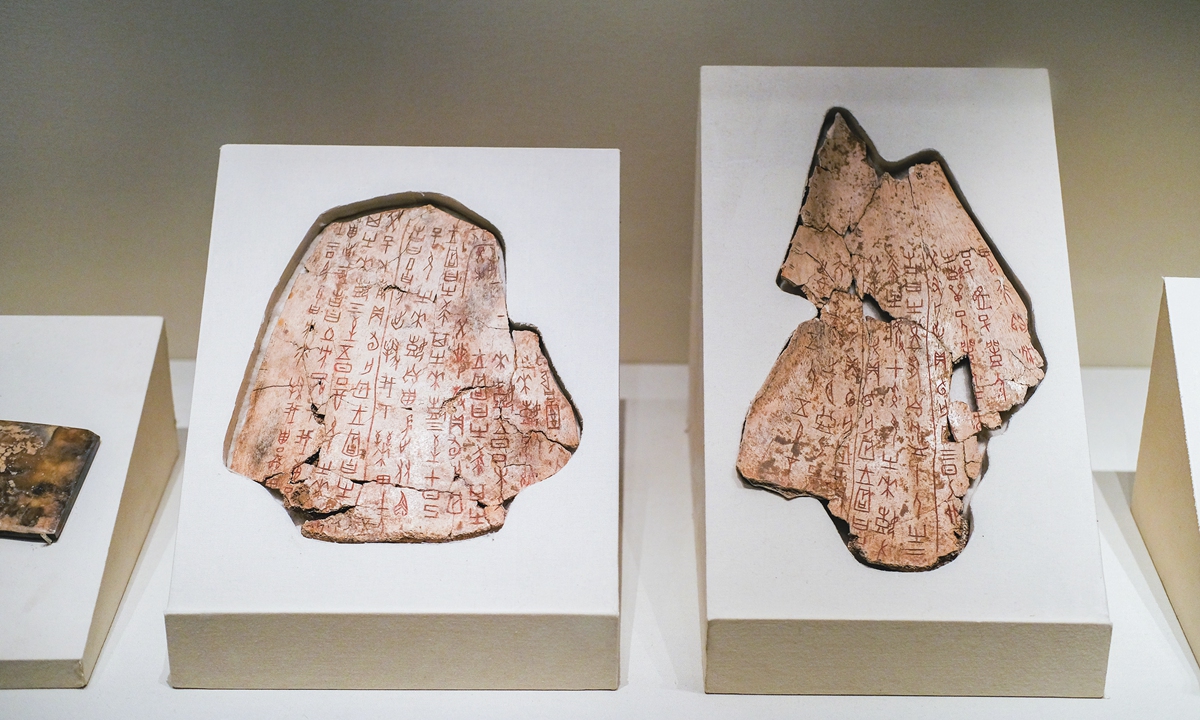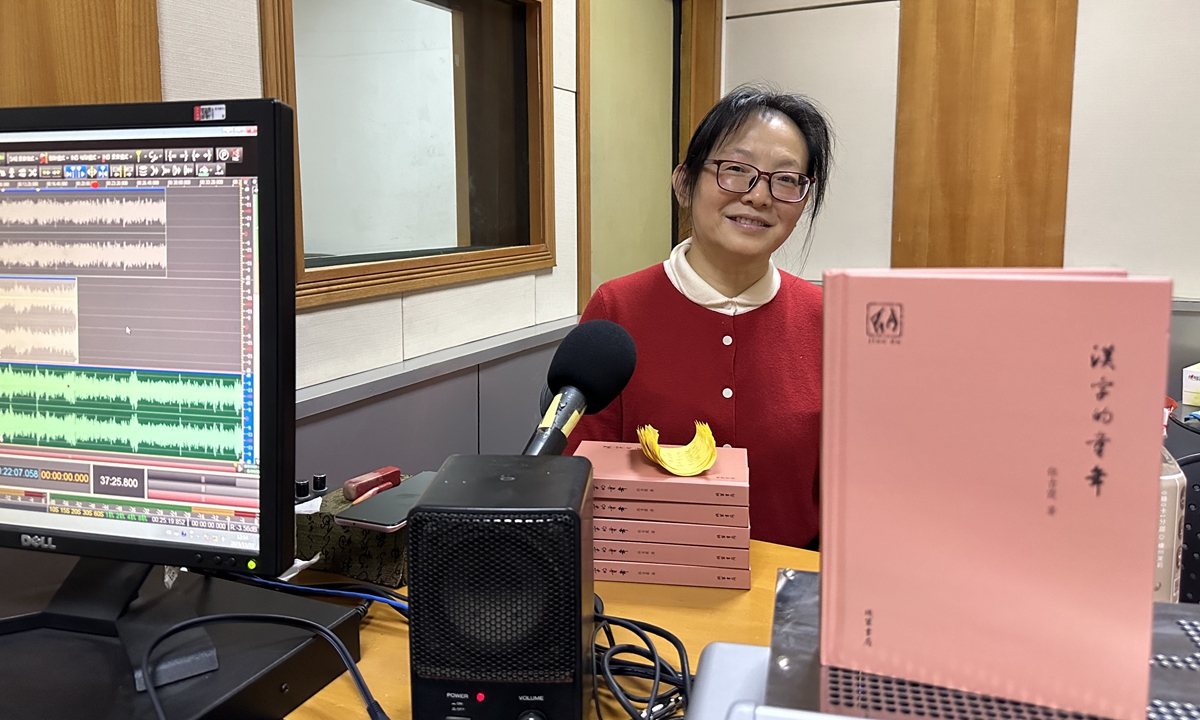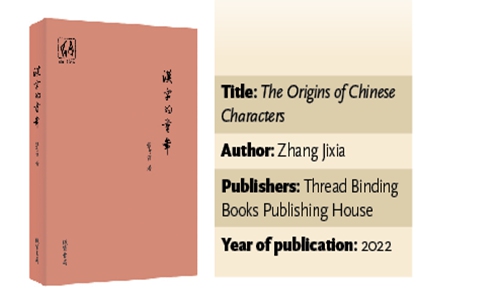ARTS / BOOKS
Book on oracle bone inscriptions provides new interpretations of 3,000-year-old scripts
Origins of Chinese characters

Chinese oracle bone inscriptions Photo: VCG

Zhang Jixia Photo: Courtesy of Zhang Jixia
In 1922, during his studies in the US, Li Ji, known as "the Father of Chinese Archaeology" in his later years, gave quite a strong opinion in terms of "the difference between alphabet and hieroglyphics" published in The Chinese Students' Monthly, which was quoted later by British scholar Bertrand Russell. Li's perspective delved into how the written word profoundly shaped the character of a nation and its society. In his opinion, supported by Chinese oracle bone inscriptions, pictographic characters exemplify the stability that sets Chinese society apart more than alphabetic counterparts.
But for linguist and book editor Zhang Jixia, this ancient script, rooted in the art of illustration, in fact possesses a uniquely dynamic quality. With decades devoted to language research, Zhang recently condensed her own insights into a concise interpretation within the 45 chapters in her latest book The Origins of Chinese Characters.
"If you carefully look into the appearance of oracle bone inscriptions, you'll uncover its mysteries," Zhang explained to the Global Times inside a café in Beijing. "In the modern Chinese characters which were evolved from oracle bone inscriptions, each character represents a specific meaning. And such a character can further evolve into hundreds of new characters based on the specific expression we intend."
To further illustrate her point, Zhang fetched a napkin and sketched a particular oracle bone character "yu (lit: rain)," on it. "Ancient people vividly depicted the shape of rain with a horizontal line as sky and three vertical lines as rain drops. Subsequently, all weather phenomena and human activities related to rain, such as 'yun (lit: clouds),' 'xia (lit: the red sky during dusk and dawn),' or even 'ling (or spirit, originally denoting a rain-praying ritual in ancient times)' are interconnected with this rain character. From one character, hundreds of them can evolve. That's the flexibility inherent in Chinese characters."
Serendipitous twist
In her book, Zhang's captivated exploration unveils the artistic tapestry woven into the very fabric of the Chinese written language, illustrating that beyond their functional purpose, Chinese characters embody a dynamic and ever-evolving form of expression.

Photo: Courtesy of Zhang Jixia
Zhang's journey into the oracle bone inscriptions began with a serendipitous twist. A veteran wordsmith for decades, her foray into the study of oracle bone inscriptions can be traced back to a unique invitation: annotating a special edition of the Yi Jing, or I Ching at the suggestion of a friend.
More than 3,000 years ago, during China's Western Zhou Dynasty (1046BC-771BC), King Wen of Zhou crafted the Yi Jing, a timeless guide to observing natural phenomena and ethical principles predating the emergence of modern natural sciences. And to decipher its ancient wisdom, one must navigate the intricate characters of oracle bone inscriptions, a linguistic relic born from the Shang Dynasty (c.1600BC-1046BC) that predates the Zhou.
Despite being a perennial bestseller, Zhang said that she remained skeptical of many existing interpretations of this classic work due to the historical divide between the Shang and Zhou dynasties.
"In history, with the demise of the Shang Dynasty at the hands of the Zhou, the flourishing system of oracle bone inscriptions was eclipsed too. Yet, the Yi Jing, emerging at the end of Shang and the beginning of Zhou, extensively incorporates this script into the book itself. And it leads one to question whether, in the initial creation of the Yi Jing, some oracle bone characters had already lost their true meaning from the Shang era," Zhang explained.
Driven by this intriguing notion, she embarked on a self-guided journey to master oracle bone inscriptions, determined to unearth its original significance during the Shang Dynasty. Distinct from conventional annotations, she curated a selection of the most captivating characters into the comprehensive book, where unconventional concepts challenge the common understanding of oracle bone inscriptions by her former translators.
In her book, Zhang turned the dusty corners of oracle bone inscriptions into a vibrant landscape of linguistic discovery. Among her whimsical explanations lies a fascinating take on the cardinal directions, challenging the conventional explanations of the character dong, or east.
Conventionally, experts decipher the character dong, meaning east, as a composition of a tree and a sun, symbolizing the sun rising through the branches - a concept that defines the east.
However, in Zhang's interpretation, the character for "east" doesn't depict the sun at its center but is instead composed of various items.
"This explains why people read dongxi as 'stuff.' Similarly, the character zhong, meaning 'heavy' in oracle bone inscriptions, was also evolved from the character dong, as putting too much stuff in a bag makes it 'heavy.' In oracle bone inscriptions, the character zhong is composed of a straw on top of the character dong, meaning pressing down the final straw on the stuff," Zhang elucidated in her book.
Crucial in modern study
Discovered in 1899, oracle bone inscriptions stand as China's earliest and systematic form of writing, marking a mature phase in the evolution of Chinese characters and dubbed the ancient Chinese "archives."
Since its discovery, scholars and society have fixated on unraveling the mysteries of oracle bone inscriptions. Recently, the Chinese Character Museum announced a reward of 100,000 yuan ($13,980) for the deciphering of each single un-translated oracle bone character, reigniting interest across Chinese social media.
According to 2022 data from the National Cultural Heritage Administration, approximately 150,000 pieces of oracle bone inscriptions have been discovered, with just over 4,400 characters deciphered as for now, a mere 1/3 of all pieces.
"While contemporary Chinese education emphasizes pinyin, I think the basic learning of oracle bone inscriptions is equally crucial. Understanding oracle bone inscriptions provides insight into how ancient people perceived the world around them. After all, in Chinese, each character represents a story," Zhang remarked.

